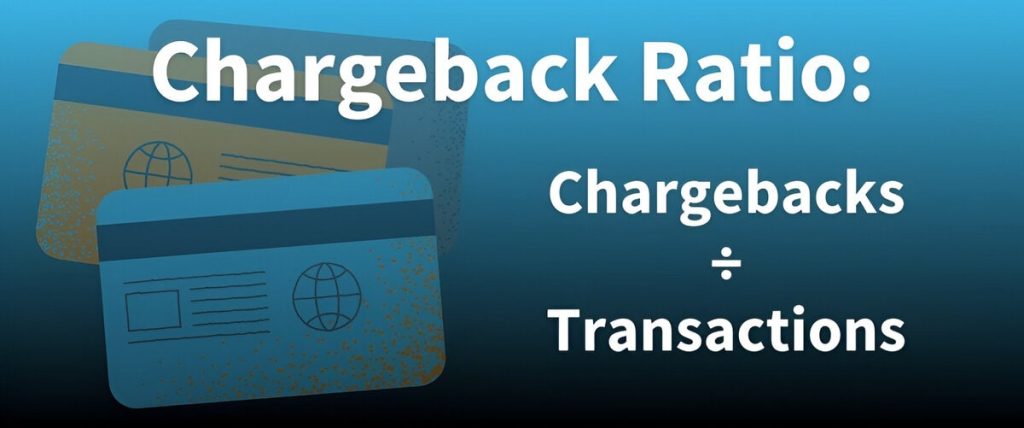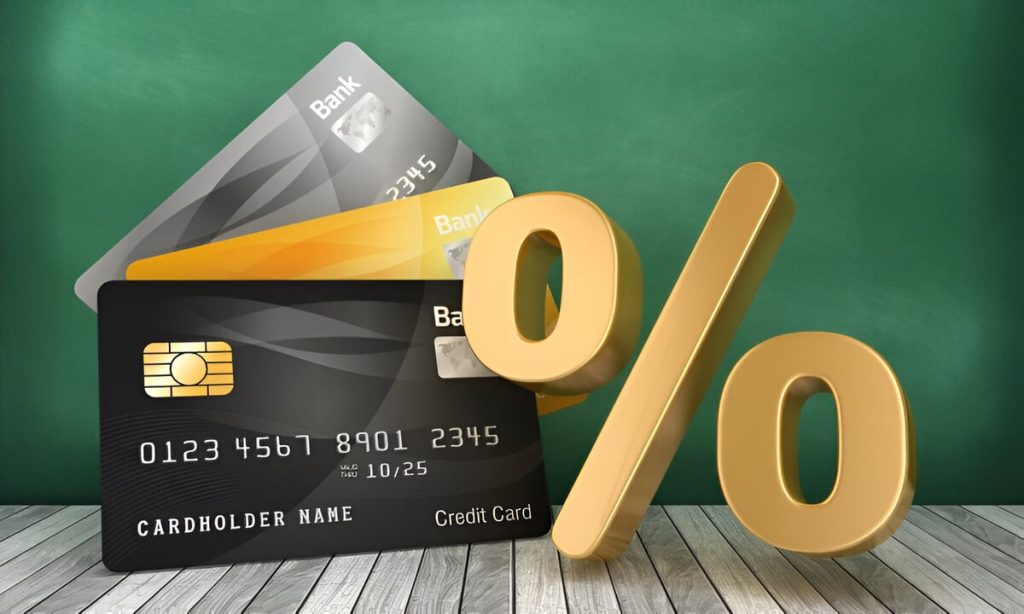A chargeback ratio is a crucial metric for businesses handling credit card transactions. It indicates the percentage of chargebacks relative to total transactions. Managing this ratio is essential for avoiding penalties from credit card companies and maintaining a strong financial profile. This article explains the chargeback ratio, how to calculate it, what industry benchmarks are, and practical methods to reduce it.
What is a Chargeback Ratio?
A chargeback ratio is the number of chargebacks divided by the total number of transactions within a specific period, typically a month. This metric shows how often disputes occur in your sales, where customers request refunds directly from their banks rather than going through the merchant. Payment processors monitor this ratio to gauge the risk level of working with your business.
For example, a business with 5,000 transactions and 25 chargebacks in a month has a chargeback ratio of 0.5%:
25 ÷ 5,000 = 0.005 or 0.5%.
Visa and Mastercard typically flag businesses when this ratio exceeds 1%, and being labeled high-risk can lead to increased fees or even termination of your merchant account.
How is the Chargeback Ratio Calculated?
Different card networks calculate the chargeback ratio slightly differently:
- Visa: Visa calculates the chargeback ratio by dividing the number of chargebacks in the current month by the total number of transactions in the same month.
- Mastercard: Mastercard uses the previous month’s transaction volume for its calculations. This means if you had 20 chargebacks in October and processed 2,000 transactions in September, your chargeback ratio for Mastercard would be 1%.
This calculation highlights the importance of consistently monitoring transactions and addressing potential issues immediately. Businesses that regularly exceed 1% risk entering chargeback monitoring programs.
Industry Standards and Benchmarks
Chargeback ratios vary significantly across industries due to different risk levels. For instance, eCommerce businesses typically face more chargebacks due to online fraud, while service-based industries often have lower ratios.
| Industry | Average Chargeback Ratio |
|---|---|
| Retail | 0.5% – 1.0% |
| Travel & Hospitality | 0.9% – 2.0% |
| Digital Goods | 0.66% – 1.5% |
| Subscription Services | 0.9% – 1.2% |
| Food & Beverage | <0.5% |
| Utilities & Services | 0.2% – 0.5% |
| Health & Wellness | 0.86% – 1.0% |
A chargeback ratio above 1% typically classifies a business as high-risk, resulting in higher fees and closer scrutiny from payment processors. Maintaining a ratio below this threshold is crucial to avoid penalties.

Consequences of High Chargeback Ratios
Exceeding the chargeback ratio limits set by card networks can result in several consequences:
- Higher Transaction Fees: Merchants with high ratios are often subject to increased processing fees to mitigate risk. These fees can be between $20 and $100 per chargeback, depending on the processor.
- Chargeback Monitoring Programs: Visa and Mastercard have programs to monitor businesses with excessive chargebacks. Once enrolled, businesses face additional scrutiny, reporting requirements, and penalties.
- Account Termination: Persistently high ratios can lead to merchant account termination. Once this happens, businesses may be placed on blacklists such as the MATCH list, making it difficult to open new merchant accounts.
Staying below the 1% threshold ensures smoother operations and avoids costly interventions by card networks.
How to Reduce Chargeback Ratios
Reducing your chargeback ratio requires a combination of fraud prevention, improving customer communication, and streamlining your payment processes. Here are actionable steps to reduce chargebacks:
- Provide Clear Product Information: One common cause of chargebacks is misleading product descriptions. Ensure product details are accurate and match customer expectations to avoid disputes.
- Enhance Customer Support: Encourage customers to contact your support team before filing a chargeback. Offering refunds or alternative solutions can prevent disputes from escalating.
- Implement Fraud Detection Tools: Fraudulent transactions are a major source of chargebacks. Tools like Address Verification System (AVS) and Card Verification Value (CVV) help identify and block suspicious transactions.
- Improve Billing Transparency: Make sure your billing descriptors are clear and easily recognizable on customer statements. Confusing or ambiguous billing information can lead to unnecessary chargebacks.
- Monitor Transactions and Disputes: Regularly review transactions to identify any patterns in chargebacks. Monitoring tools, such as those provided by Merchanto.org, an official partner of Visa and Mastercard in chargeback prevention, can help businesses identify risk areas and reduce chargeback rates. Visit Merchanto.org for more information on chargeback prevention solutions.
- Streamline Your Return Policy: Make sure your return policy is clear, easy to find, and simple to follow. Many chargebacks arise from customers being unaware of the return process.
- Use Secure Payment Channels: Ensure you are using the latest security protocols for payment processing, such as 3D Secure authentication, to reduce fraudulent transactions.
Chargeback Ratios by Payment Processor
Different payment processors have varying thresholds and chargeback management systems. Below is a comparison of chargeback policies among major payment processors:
| Payment Processor | Chargeback Fee | Threshold for High-Risk Merchants | Monitoring Programs |
|---|---|---|---|
| Visa | $20 – $100 | 1% | Yes |
| Mastercard | $25 – $100 | 1.5% | Yes |
| American Express | Varies | 1% | Informal threshold |
| Discover | Varies | 1% | Yes |

Factors Affecting Chargeback Ratios
Several key factors influence your chargeback ratio:
- Fraud: Fraudulent transactions significantly drive up chargeback ratios. Investing in fraud detection tools can help prevent these disputes from arising.
- Billing Discrepancies: Customers often file chargebacks when they don’t recognize charges on their credit card statements. Ensure your billing descriptors are clear and match the services or products you provide.
- Customer Satisfaction: Dissatisfied customers are more likely to dispute charges. Focus on meeting customer expectations by delivering quality products and services and providing strong post-purchase support.
Understanding and addressing these factors can help you maintain a healthy chargeback ratio and avoid excessive fees or penalties.
Table: Average Time to Resolve Chargebacks by Industry
| Industry | Average Time to Resolve (Days) |
|---|---|
| Retail | 30-60 days |
| Travel & Hospitality | 60-90 days |
| Subscription Services | 45-75 days |
| Digital Goods | 30-50 days |
| Health & Wellness | 40-60 days |
Resolving chargebacks can take significant time, particularly in industries with complex sales cycles. The faster you respond to disputes, the better your chances of success in reducing chargebacks.
Best Practices for Monitoring Chargeback Ratios
To effectively manage and reduce your chargeback ratio, use these best practices:
- Use Real-Time Analytics: Tools offer real-time monitoring of chargeback ratios, helping businesses detect problems early. This allows for quicker responses to chargebacks and better prevention strategies.
- Stay Compliant with Payment Processors: Follow guidelines from Visa, Mastercard, and other payment processors to ensure you remain in good standing. Adhering to their protocols minimizes the risk of penalties.
- Train Customer Support Teams: Make sure your customer support team is trained to handle disputes before they escalate into chargebacks. They should be empowered to offer refunds or resolve issues quickly.
Conclusion
Managing your chargeback ratio is essential to the health of your business. A high chargeback ratio can lead to penalties, higher fees, and even account termination, while maintaining a low ratio keeps your operations running smoothly. By implementing fraud detection tools, providing clear customer service, and working with chargeback prevention partners you can significantly reduce chargebacks.
Staying proactive in monitoring chargeback ratios will help ensure your business remains profitable and maintains strong relationships with payment processors.



